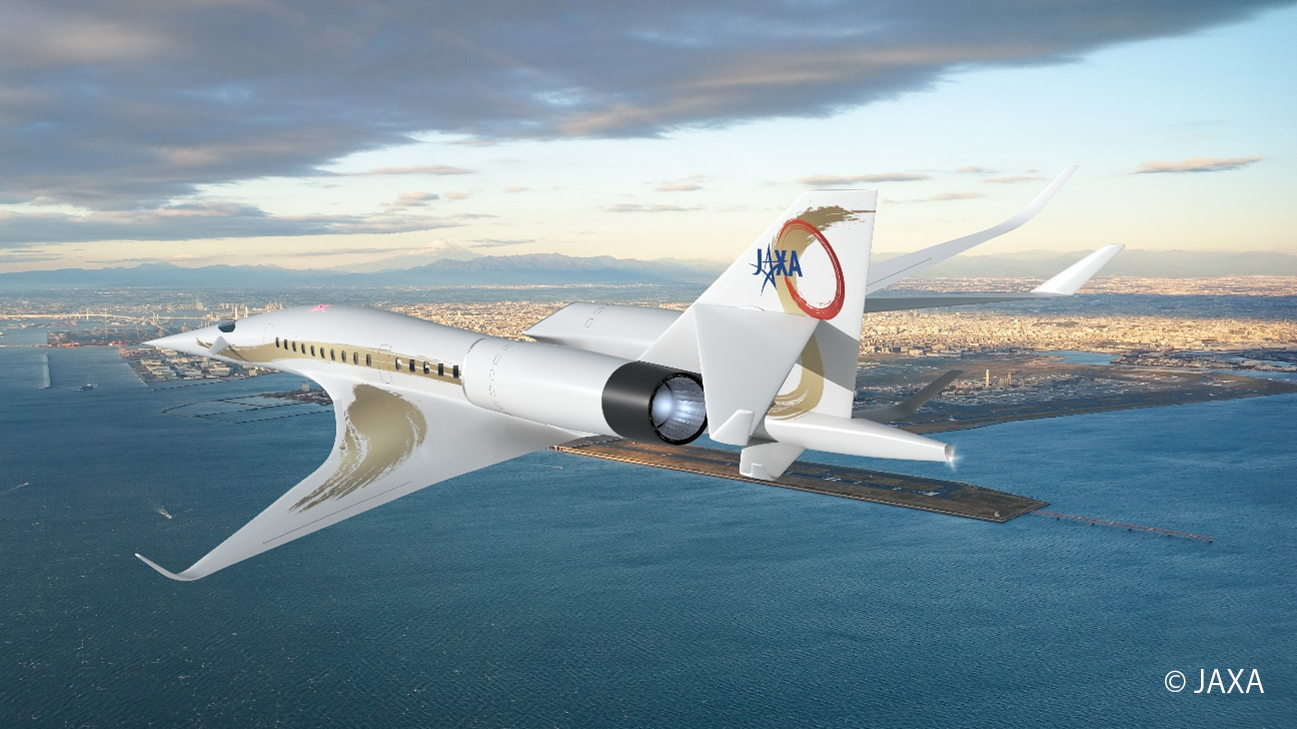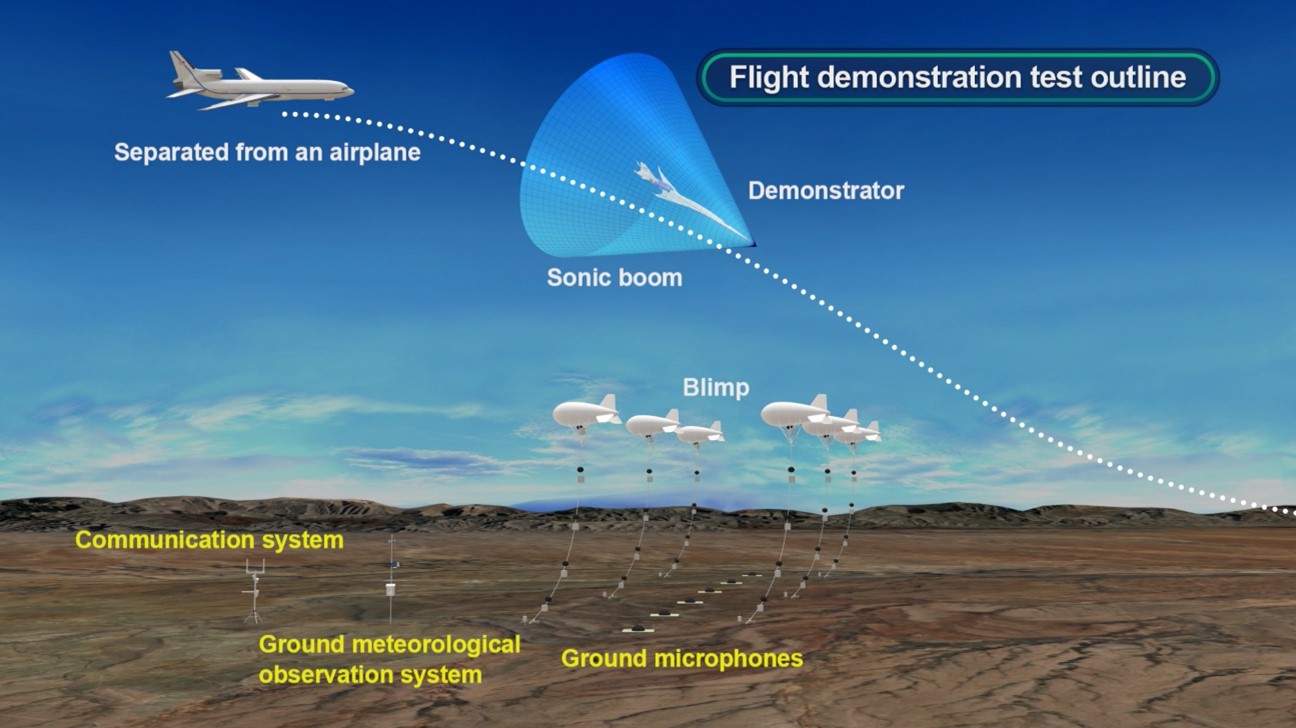Research & Development
JAXA promotes three research and development programs and a fundamental research program that underpins them.
Re-BooT Project
- Sep 22, 2023
- Special Talk: What is a Good Sound? [JAXA's No.92]
When an aircraft flies at supersonic speed, sudden pressure fluctuations known as shock waves occur around the aircraft. When these waves reach the ground, they are observed as an impulsive noise called a sonic boom, which poses a major obstacle to the realization of civilian supersonic aircraft.
JAXA demonstrated the concept of low sonic boom design through a flight test of the D-SEND project conducted in 2015, and has acquired technology to reduce the strength of sonic boom to half that of conventional supersonic passenger aircraft.
Since the D-SEND project, we have been researching robust low-boom design technology to further develop the concept of low sonic boom design and to make sonic boom quieter in a wider area.
The Re-BooT (Robust en-route sonic-Boom mitigation Technology demonstration) project will demonstrate the robust low-boom design technology.

Conceptual illustration of supersonic transport applied with low boom design
Project Overview
The Re-BooT project has two objectives: "flight demonstration of robust low-boom design technology" and "conceptual design of robust low-boom supersonic passenger aircraft."
Flight demonstration of robust low-boom design technology
JAXA's robust low-boom design technology will be demonstrated through flight tests. We will develop a demonstration vehicle applying "robust low-boom design technology" and measure sonic booms generated during supersonic flight to verify that the waveforms are as designed.
The demonstrator will be an unmanned vehicle with a total length of roughly 10 meters. Although engines will not be installed, an airframe with engine containers will be designed to evaluate the sonic boom waveforms generated by an aircraft with a similar shape to that of a passenger aircraft.
The demonstrator will be mounted on a manned aircraft and carried up to the sky. After separated from the carrier aircraft at an altitude of approximately 13 km, the demonstrator will accelerate to supersonic speed by gravity. It will then be autonomously controlled by the on-board computer to fly over the measurement system installed on the ground under specified conditions such as position and speed.
Near the ground surface, the sonic boom waveform is deformed by the unstable atmosphere, and it makes it difficult to accurately validate the effect of the low-boom design. Therefore, the microphone will be hoisted to an altitude where the atmosphere is less turbulent using tethered balloons.
We plan to conduct the flight tests around 2028.

Schema of flight test for demonstrating robust low boom design technology
This flight demonstration will be carried out as part of the research and development project funded by the Japan Science and Technology Agency (JST) under the "Key and Advanced Technology R&D through Cross Community Collaboration Program" (commonly known as the K Program) established under the leadership of the Cabinet Office.
JAXA will conduct flight demonstration in cooperation with Mitsubishi Heavy Industries, Ltd. (MHI), a co-proposer to the K Program.
JAXA designs the shape of the demonstration vehicle using the robust low-boom design technology, while MHI is mainly in charge of the development and manufacture of the demonstration vehicle.
Conceptual design of robust low-boom supersonic passenger aircraft
We will apply the robust low-boom design technology, which will be demonstrated in flight tests, to design a concept of a quiet supersonic passenger aircraft.
In addition to reducing the sonic boom, the actual passenger aircraft must meet various requirements, including safety and cruising range suitable for commercial demand.
The conceptual aircraft to be designed will be presented to the International Civil Aviation Organization (ICAO), a specialized agency of the United Nations, to contribute to the development of international standards for sonic booms.
Robust low boom design technology
Sonic booms occur not only at the moment when an aircraft exceeds the speed of sound but all the time while flying at supersonic speeds.
The sonic boom spreads conically from the aircraft. The location on the ground where sonic booms are heard moves along with the supersonic flight, and the trajectory spreads below the supersonic flight path in a strip. This is called boom carpet.
The robust low-boom design technology reduces sonic booms observed throughout the boom carpet.
The low boom design technology demonstrated in the D-SEND project was designed to reduce the sonic boom directly under the flight path (on-track position), under the design cruise speed condition (on-design condition).
The robust low-boom design technology to be demonstrated in the Re-BooT project is to reduce sonic boom in conditions other than design cruise speed (off-design conditions) and on the side of the flight path (off-track position) and has been patented in Japan and overseas.

Boom carpet of D-SEND (top) and Re-BooT (bottom) technologies
Details of flight demonstration and robust low-boom design technology are presented in this video.
R&D on the Integrated Design Technology for Silent Supersonic Transport
October 1, 2024